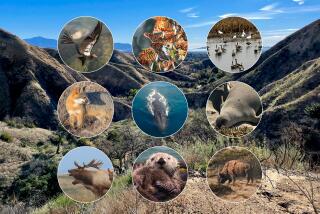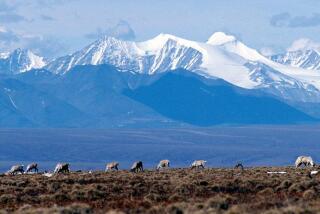Wildlife watching in Alaska
If you visit Sitka and Juneau, Alaska, this month, it’s often easy to spot bald eagles, ravens and black and brown bears on your own. (I expected to have the same luck in June and got skunked, except for the raven I photographed in a Foodland parking lot.) Timing is everything with wildlife watching and opportunities increase when berries are ripe or fish are running or spawning.
Here’s a look at when and where to see bears, eagles and whales inexpensively in southeastern Alaska. If you visit at other times, you’ll see plenty of wildlife but you may need to pay experts to take you there.
Bears
When: Late May-June 15; mid-July-August (salmon run)
Where: Glacier Bay and Gustavus (the gateway to Glacier Bay, https://www.gustavusak.com)
Glacier Bay National Park (www.nps.gov/glba/index.htm; https://www.visitglacierbay.com)
Bartlett Cove beach; the Bartlett River; campgrounds and the area near Glacier Bay Lodge (especially the dining room). Brown bears are spotted more frequently than black bears.
Gustavus: Bear Track Inn (www.beartrackinn.com, surrounded by a creek on three sides, visitors primarily see black bears); backyards; and wooded areas
Haines (brown and black): Haines Highway and Lutak Road (www.haines.ak.us)
Ketchikan (brown and black): Herring Cove beach (www.visit-ketchikan.com)
Sitka (www.sitka.org) (brown only): Fortress of the Bear (year-round, https://www.fortressofthebear.org) rescue center for orphaned brown bears, $10 admission); Indian River Trail in Tongass National Forest (www.fs.fed.us/r10/tongass)
Admiralty Island National Monument (near Juneau, https://www.lat.ms/OE91cP) at Pack Creek (more than 1,600 brown bears, among the largest populations in the world). Admiralty can be reached only by floatplane, boat, canoe or kayak, and a visiting permit is required.
Petersburg (www.petersburg.org) (black only): Blind River Rapids (14 miles from Petersburg); Crystal Lake Hatchery (18 miles from town, https://www.ssraa.org/crystal_lake.htm)
Juneau (black only; https://www.traveljuneau.com)
Mendenhall Glacier (13 miles from downtown Juneau) overlooks provide great views of black bears fishing for salmon in Steep Creek near the Visitor Center (www.fs.fed.us/r10/tongass/districts/mendenhall); Mt. Roberts (trails and viewing overlooks). Just above downtown Juneau. Most visitors take the Mt. Roberts tramway up (www.goldbelttours.com/mount-roberts-tramway).
Bald eagles
When: March and April (when herring and the eulachon, a smelt-like fish, spawn, especially in Wrangell; June-August (when king, chum and silver salmon begin spawning). September-mid-November in Haines during final salmon run.
Where: From Petersburg to Ketchikan, almost every town has resident eagles on rooftops, treetops, light posts and buoys. Here are a few top spots:
Haines (the resident eagle population swells from 400 to 3,500 in the fall; Haines hosts an eagle festival every November). Among prime places:
Chilkoot State Park, https://www.haines.ak.us/chilkoot-state-park
Chilkat Bald Eagle Preserve along the Chilkat River Delta “flats” (20 miles from town along the Haines Highway between miles 18 and 24, https://www.lat.ms/OEb8x7
American Bald Eagle Foundation and Raptor Center ($10 adult admission; www.baldeagles.org)
Wrangell: Start at the Web address for this city in central southeastern Alaska: https://www.wrangell.com/visitorservices).
Also consider visiting:
Stikine River, which runs 400 miles from its headwaters in British Columbia, Canada, to its mouth near Wrangell. Its delta is home to more than 120 species of migrating birds.
Juneau
Macaulay Salmon Hatchery (www.dipac.net/Macaulay_hatchery.html) is an ocean “ranch” that rears and releases salmon to enhance the wild population in Juneau.
Mt. Roberts, see info under bears.
Berner’s Bay, about 38 miles north of Juneau.
Sitka
Alaska Raptor Center (www.alaskaraptor.org, $12 adult admission) is a raptor rehabilitation, education and research center that works to return birds to the wild whenever possible. Injured bald eagles, hawks and owls too injured to survive become educational ambassadors for their species.
Sitka Sound
Whales: Humpbacks, orcas and gray whales
When: May-November
From the Alaska Marine Highway System Ferry (www.dot.state.ak.us/amhs). The ferry, which turns 50 next year, has spacious common areas even when its cabin and car deck space is sold out in the summer.
Wrangell Narrows between Wrangell and Petersburg
Icy Straits (from Juneau to Gustavus, Hoonah or Pelican)
From shore or a kayak
Docks in Gustavus or Glacier Bay
Sitka Sound and Whale Park (primarily in November) in Sitka
Good whale watch operators out of Juneau, Sitka and Gustavus include Allen Marine (Sitka and Juneau: https://www.allenmarine.com). Adventures in Alaska (Juneau, https://www.whale-watch.biz/index.htm) and Cross Sound Express (Gustavus to Point Adolphus, https://www.taz.gustavus.com)
Other critters
Moose (primarily in Gustavus, Haines and Wrangell) and hoary marmots (mountainous areas in Alaska south of the Yukon). Stellar sea lions, harbor seals and otters call southeastern Alaska home. The region is teeming with bird life besides bald eagles, including black-legged kittiwakes, Arctic terns and horned and tufted Puffins.
More to Read
Sign up for The Wild
We’ll help you find the best places to hike, bike and run, as well as the perfect silent spots for meditation and yoga.
You may occasionally receive promotional content from the Los Angeles Times.






